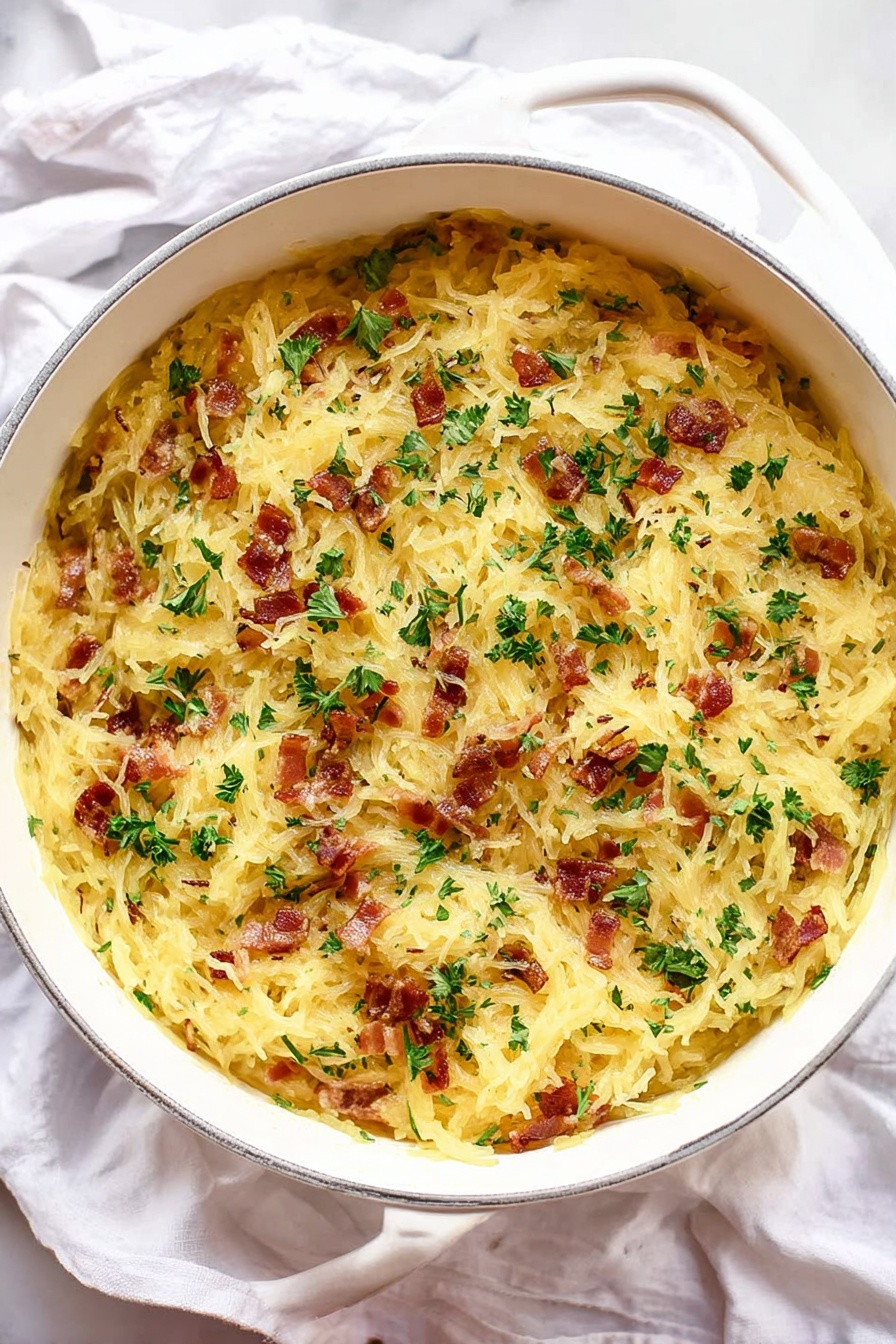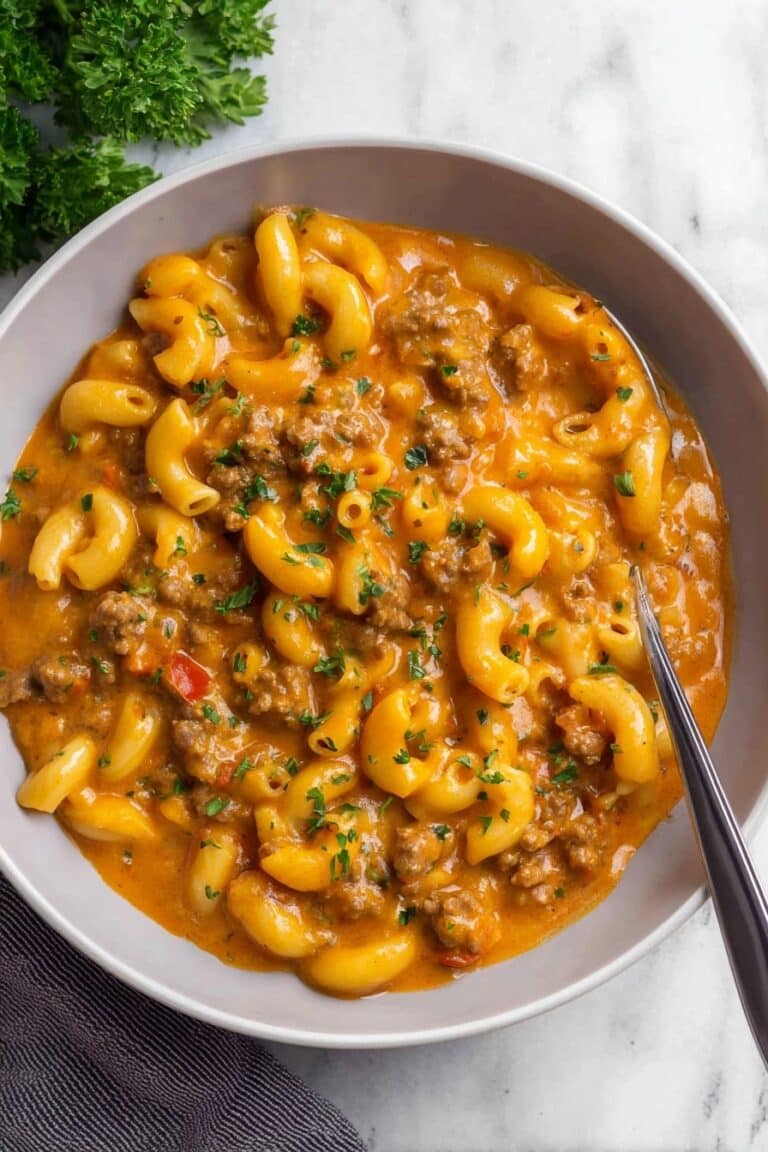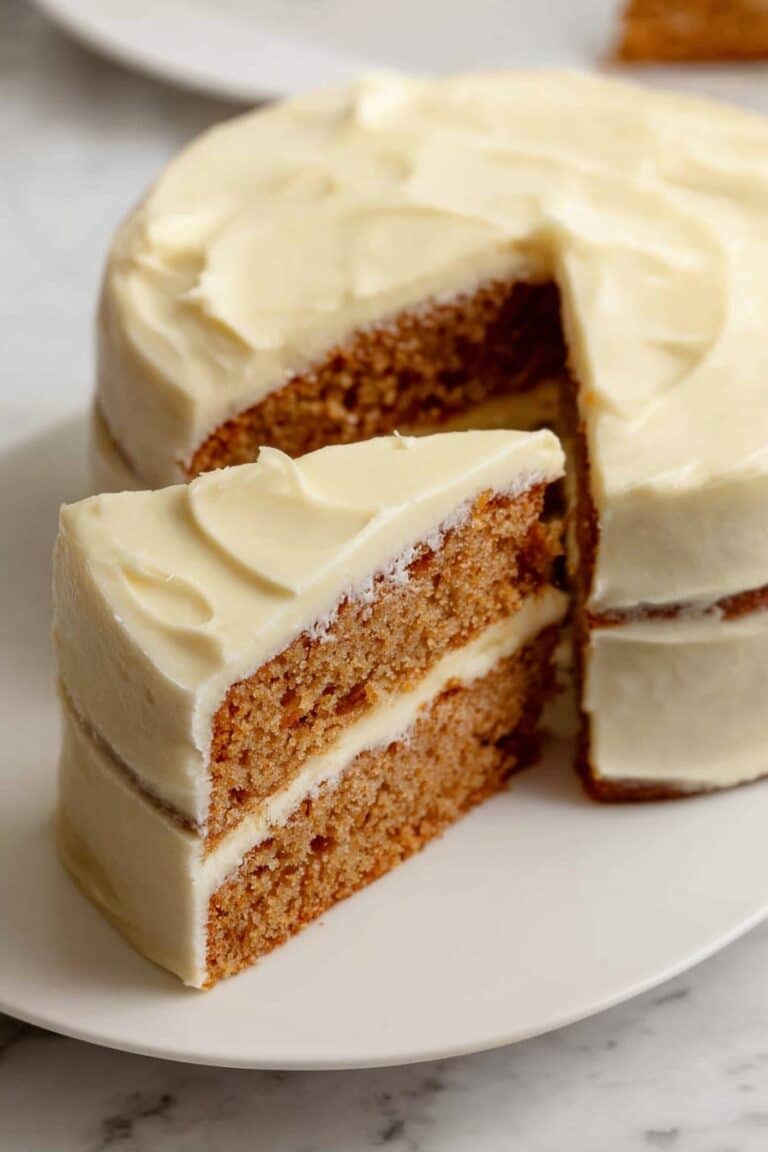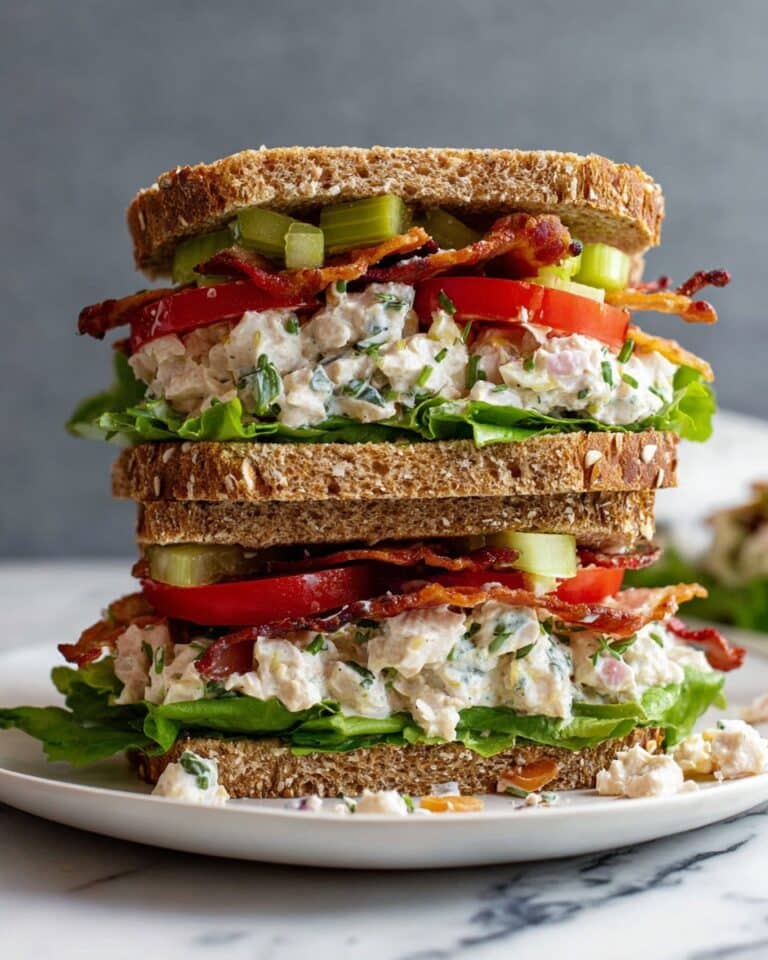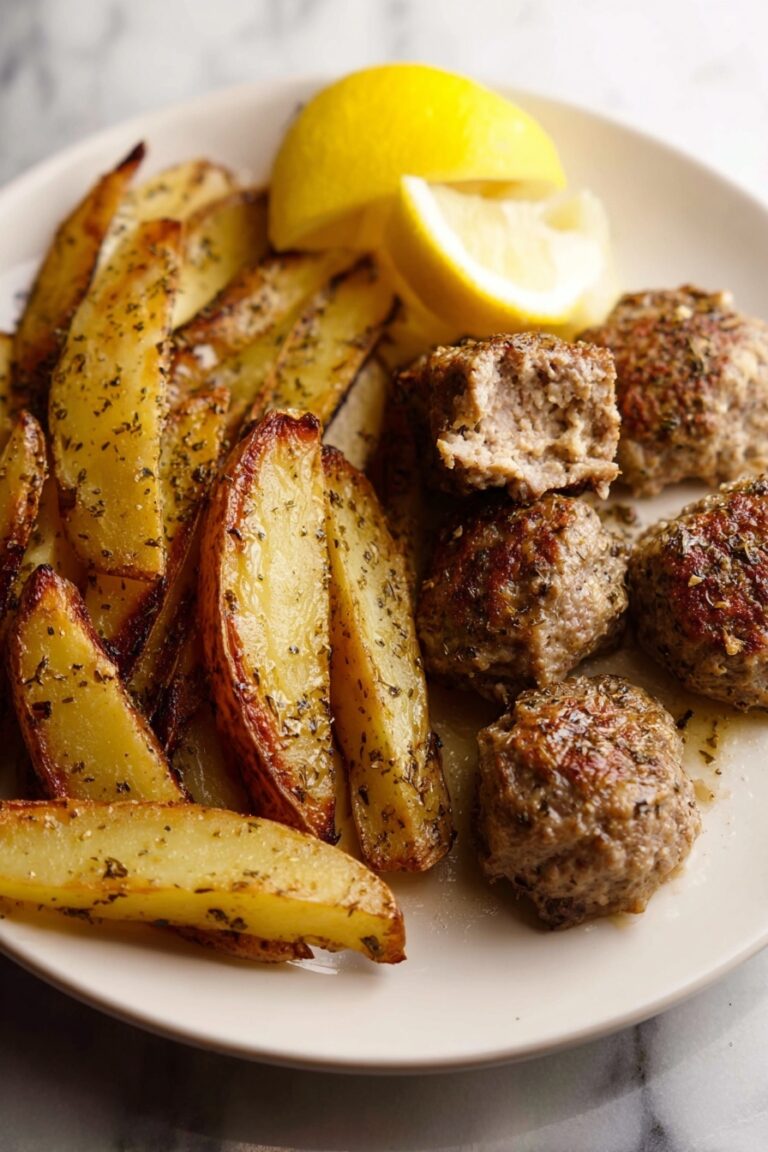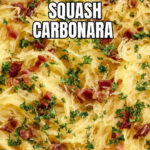Spaghetti Squash Carbonara Recipe
If you love the creamy richness of classic carbonara but want a lighter, veggie-forward twist, you’re going to fall head over heels for this Spaghetti Squash Carbonara Recipe. It captures all that comforting, lush flavor without the carb overload, and I’m excited to share all my little tricks that make it shine every single time. Trust me, once you try this, it’ll quickly become your go-to when you want something both cozy and clever in the kitchen!
Why This Recipe Works
- Vegetable-Based Comfort Food: Using spaghetti squash keeps this dish light but satisfying, perfect for when you want a healthy spin on a classic.
- Creamy Egg-Parmesan Sauce: The eggs and Parmesan come together to create a luscious, silky coating that feels indulgent without heavy cream.
- Crispy Bacon Magic: Adding crispy bacon (or pancetta) introduces that irresistible savory crunch and depth of flavor that carbonara is known for.
- Simple Yet Elegant: This recipe uses few ingredients but balances them wonderfully, making it both approachable and impressive.
Ingredients & Why They Work
Every ingredient in this Spaghetti Squash Carbonara Recipe is chosen to play a specific role, creating harmony between rich, savory, and fresh flavors. When shopping, grab a firm, fresh spaghetti squash and quality bacon or pancetta—that’s key to nailing the texture and taste.

- Spaghetti Squash: This veggie sub for pasta adds a natural sweetness and hearty texture that perfectly soaks up the sauce.
- Egg Yolks & Eggs: Room temperature eggs emulsify with Parmesan to form the creamy carbonara sauce without scrambling.
- Parmesan Cheese: Grated finely to melt smoothly, Parmesan offers salty depth and richness that are signature to carbonara.
- Bacon (or Pancetta/Guanciale): Provides smoky, crispy bites that elevate the entire dish—feel free to use your favorite cured pork.
- Garlic: Just a little for fragrant warmth and to complement the bacon.
- Kosher Salt: Enhances all the flavors—remember, seasoning is crucial, especially with vegetables.
- Parsley: Fresh herb garnish for brightness and a pop of color on the plate.
Make It Your Way
I’m a fan of keeping this Spaghetti Squash Carbonara Recipe close to its roots but sometimes like to jazz it up with extras that make it feel special — so don’t hesitate to tweak it a bit to fit your taste buds or what you’ve got on hand!
- Variation: Try swapping bacon for pancetta or guanciale if you want the authentic Italian vibe, and I find it brings a deeper, more refined flavor.
- Vegetarian Twist: For a meatless version, crisp up some mushrooms or smoked tofu—it won’t have the same punch but still delicious.
- Extra Creamy: If you’re craving an ultra-silky sauce, add a splash of cream or crème fraîche when mixing the eggs and cheese.
- Herb Play: Fresh thyme or sage mixed into the bacon fat before adding squash can add a wonderful aromatic note that’s unexpected but lovely.
Step-by-Step: How I Make Spaghetti Squash Carbonara Recipe
Step 1: Roast the Spaghetti Squash to Perfection
Start by preheating your oven to 400°F. Slice the spaghetti squash in half lengthwise with a sharp knife (this can be a bit of work, so be careful or soften the squash slightly in the microwave first). Scoop out the seeds and place the halves flesh-side down on a parchment-lined baking sheet. Roast for about 30-45 minutes, depending on the size—it’s done when the flesh is tender and easily shredded with a fork. I always watch closely toward the end because overcooking can make it mushy, and that’s not what we want!
Step 2: Prepare the Egg-Parmesan Sauce While Cooling
While the squash cools just enough to handle, whisk together the room-temperature eggs, yolks, and finely grated Parmesan in a medium bowl. Getting your eggs to room temp is a game changer here—it helps the sauce come together silky smooth without scrambling when added to the warm squash later. I set them out right after putting the squash in the oven to time it perfectly.
Step 3: Crisp the Bacon and Infuse Garlic
Heat a large skillet over medium and toss in your chopped bacon, pancetta, or guanciale. Cook it until it’s golden and crispy—about 5 to 7 minutes. Add the minced garlic for the last minute of cooking and stir until fragrant. That smoky fat mixed with garlic is the heart of this dish and smells absolutely irresistible while you cook.
Step 4: Combine Everything Just Right
Flip your roasted spaghetti squash flesh-side up and shred it with a fork into spaghetti-like strands. Add the squash directly into the skillet with bacon and garlic, plus a pinch of kosher salt. Toss everything together so the strands soak up that savory fat and garlic goodness, heating it through.
Then, take the skillet completely off the heat—no cheating here, it’s so important. Using two hands and tongs, toss the spaghetti squash strands while slowly pouring in the egg and cheese mixture. The residual heat gently cooks the eggs, turning them into a creamy sauce that clings to every strand without scrambling into a mess. This step took me a few tries to nail, but once you feel that silky texture, you’ll know you’ve got it right!
Step 5: Plate and Garnish Like a Pro
Dish out your spaghetti squash carbonara onto plates and sprinkle with freshly chopped parsley and extra Parmesan. The parsley adds a fresh, herby brightness that cuts through the richness and makes it feel restaurant-worthy, even on a weeknight. Now, sit down and savor every bite—you earned it!
Tips from My Kitchen
- Room Temperature Eggs: Taking eggs out early is key—it makes the sauce silky, no curdling or scrambling.
- Two Hands Tossing: Using both hands with tongs helps evenly coat every strand without the sauce breaking.
- Pan Off Heat: Always remove the pan from heat before adding eggs; residual warmth is perfect, any more heat ruins the sauce texture.
- Reviving Leftovers: When reheating, add a splash of cream or broth to keep the sauce from drying out—microwaving alone tends to toughen it.
How to Serve Spaghetti Squash Carbonara Recipe

Garnishes
I always finish with a scattering of fresh chopped parsley and a generous grating of Parmesan to brighten up the plate both visually and flavor-wise. Sometimes a crack of fresh black pepper adds just the right hint of spice, too—so I keep a pepper mill handy at the table!
Side Dishes
This recipe pairs wonderfully with a crisp green salad or roasted vegetables; I especially love steamed asparagus or a simple arugula salad with lemon vinaigrette. It balances the richness perfectly without competing for attention.
Creative Ways to Present
For a dinner party, I like to serve this Spaghetti Squash Carbonara Recipe in individual shallow bowls with sprigs of fresh herbs carefully placed on top. You could even nestle the squash “noodles” inside roasted pepper halves for a fun edible bowl that wows your guests and adds a pop of color.
Make Ahead and Storage
Storing Leftovers
Store leftover Spaghetti Squash Carbonara in an airtight container in the refrigerator for up to 3 days. I find it keeps fairly well, though the texture softens a bit over time since the squash continues to release moisture.
Freezing
Freezing this dish isn’t my favorite because the sauce can separate and the texture of the spaghetti squash changes, but if you want to, freeze in portioned containers and thaw overnight in the fridge before reheating gently.
Reheating
When reheating, I warm it gently on the stovetop with a splash of heavy cream or chicken broth stirred in. This softens the sauce back to silky perfection, which microwaving alone won’t achieve.
FAQs
-
Can I use regular pasta instead of spaghetti squash in this carbonara recipe?
Absolutely! While this recipe highlights spaghetti squash as a veggie alternative, you can substitute it with traditional pasta if you prefer. Just be mindful that cooking times and liquid ratios may need adjusting to achieve the creamy sauce without scrambling the eggs.
-
Why do I need to use room temperature eggs for carbonara?
Using room temperature eggs helps the sauce emulsify smoothly when mixed with hot squash, preventing the eggs from cooking too quickly and turning into scrambled eggs. This step is essential for that signature velvety carbonara texture.
-
Can I make Spaghetti Squash Carbonara Recipe ahead of time?
You can prepare the spaghetti squash in advance and crisp the bacon ahead of time, but I recommend mixing everything together just before serving to maintain the best texture and flavor.
-
What if I don’t have bacon or pancetta? Can I use something else?
If you don’t have bacon or pancetta, feel free to experiment with smoked turkey, mushrooms for a vegetarian option, or even diced ham. The flavor will shift, but the dish will still be tasty! Just make sure whatever you use delivers some saltiness and texture.
-
How do I avoid scrambled eggs when making carbonara?
The best way is to remove the pan from heat before adding the egg mixture and toss quickly but gently so the residual heat cooks the eggs slowly into a creamy sauce instead of scrambled bits. Using room temperature eggs also greatly helps.
Final Thoughts
Honestly, this Spaghetti Squash Carbonara Recipe holds a special place in my kitchen because it brings together the indulgent flavors of Italy with a modern, wholesome twist that feels guilt-free. It’s one of those recipes I come back to when I want comfort that’s cozy but still fresh and light. I hope you give it a whirl and discover how easy and delicious a veggie-forward carbonara can be. Your dinner guests—and your taste buds—will thank you!
Print
Spaghetti Squash Carbonara Recipe
- Prep Time: 15 minutes
- Cook Time: 50 minutes
- Total Time: 1 hour 5 minutes
- Yield: 6 servings
- Category: Main Course
- Method: Baking
- Cuisine: Italian
- Diet: Gluten Free
Description
A creamy and flavorful Spaghetti Squash Carbonara that combines roasted spaghetti squash strands with a rich egg and Parmesan sauce, crispy bacon, and garlic. This lighter twist on classic carbonara is gluten free and perfect for a satisfying dinner.
Ingredients
Main Ingredients
- 4 pounds spaghetti squash (about 2 small or 1 large)
- 2 egg yolks, room temperature
- 2 whole eggs, room temperature
- 4 oz Parmesan, finely grated
- 12 ounces bacon, roughly chopped (can substitute pancetta or guanciale)
- 3 cloves garlic, minced
- 1/2 teaspoon kosher salt
- Parsley, chopped (for serving)
Instructions
- Prepare the squash: Preheat the oven to 400 Fahrenheit. Slice the spaghetti squash lengthwise and scoop out the seeds. Place the squash halves flesh side down on a parchment-lined baking sheet and roast for 45 minutes until the strands separate easily with a fork.
- Shred the squash: Remove the squash from the oven, flip it over, and let it cool until safe to handle. Use a fork to shred the flesh into spaghetti-like strands and set aside.
- Make the sauce: In a medium bowl, whisk together the room temperature eggs, egg yolks, and Parmesan cheese until fully combined. Set aside.
- Cook the bacon and garlic: Heat a large skillet over medium heat. Add the chopped bacon and sauté until crispy, about 5 to 7 minutes. Add the minced garlic and cook until fragrant, about 1 minute.
- Combine squash and bacon: Add the shredded spaghetti squash and kosher salt to the skillet, tossing to coat the strands evenly in the bacon fat and garlic. Heat through over medium heat.
- Add the egg mixture: Remove the skillet completely from the heat (place it on a trivet or counter). Using two hands, toss the spaghetti squash while slowly pouring in the egg and Parmesan mixture to create a silky sauce without scrambling the eggs.
- Serve: Plate the carbonara and garnish with chopped parsley and additional Parmesan. Enjoy warm.
Notes
- Use room temperature eggs and yolks for a smooth, silky sauce.
- Two-handed tossing is key to evenly coating the squash without scrambling the eggs.
- Do not return the pan to heat after adding eggs to prevent scrambling.
- When reheating leftovers, add a splash of heavy cream or chicken broth to restore sauce creaminess and prevent dryness.
- Substitute pancetta or guanciale for bacon for a traditional Italian flavor.
Nutrition
- Serving Size: 1 serving
- Calories: 350 kcal
- Sugar: 2 g
- Sodium: 550 mg
- Fat: 25 g
- Saturated Fat: 8 g
- Unsaturated Fat: 14 g
- Trans Fat: 0 g
- Carbohydrates: 15 g
- Fiber: 3 g
- Protein: 18 g
- Cholesterol: 210 mg

